Search Results for 'Galway Archaeological and Historical Society'
23 results found.
Waiting at Tiffany’s on Broadway
In the Diary of September 22 I asked whether the ‘gallant and humane’ Captain John Wilson of the The Minnie Schiffer, who miraculously snatched from certain death 591 passengers and crew from the burning PS Connaught, ever received the ‘elegant service of plate’ especially commissioned for him from the prestigious Tiffany and Co of Broadway, New York. The plate was paid for by the merchants of New York and Boston ‘in appreciation of his gallant conduct at sea’ on that fateful evening October 8 1860.
Justice at last for the Indian Empire incident?
Despite the excitement, the prospects, the agreement to carry mail, and new luxury ships, the Galway transatlantic adventure headed by J. Orwell Lever ended in failure within six years.
Fr Peter Daly - ‘The warmest expression of our unbounded gratitude.’
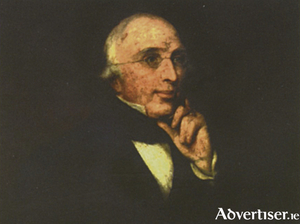
Described as a ‘turbulent priest’, and ‘the dominant public figure in Galway during the 1850s’, who was ‘a stubborn, abrasive, guileful and egotistical populist,’* Fr Peter Daly was the principle mover and shaker behind Galway’s drive to become the main transatlantic port for traffic to America in the 1850s. As chairman of both the Town Commissioners and the Harbour Board, he supported J O Lever’s Galway Line, which was to run three state-of-the-art steam-sailing ships between Galway and New York, from a grandiose harbour to be built off Furbo. Passengers from Britain, and all over Ireland, would be delivered to the terminal by train. It was to be the most comfortable, and shortest, route to America.
The Collegiate Church
The Collegiate Church of St Nicholas of Myra is the largest medieval parish church in Ireland and its history is a kind of microcosm of the history of Galway. The earliest part of the present church dates from the beginning of the 14th century and includes the chancel with its three windows in the south wall. However it is possible that there was an earlier structure on the site. There is a legend that a man from the Aran Islands who died in 1580 aged 220 years could remember a time when the church did not exist but that just sounds a likely story. The records that exist suggest that the church was founded in or about the year 1320.
Public lecture on the struggle for Home Rule for Ireland
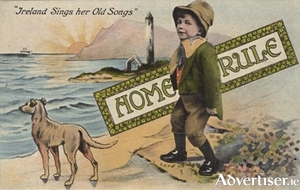
Home Rule was once the goal of Irish nationalism, but continual opposition from the House of Lords and the threat of violence from Ulster unionists dogged and delayed its achievement.
The Eglinton Canal
One hundred and sixty eight years ago this week, on March 8, work started on the cutting of what we know as the Eglinton Canal. There had been previous attempts to open a passage from the river to the sea. As far back as 1498, the then mayor had a plan to connect the Sandy River with Lough Athalia. It was Alexander Nimmo who first mooted the idea of a canal in 1822. If steamboats could travel from the docks to the Corrib, it would greatly enhance the commercial importance of the city and a valuable connection with the hinterland would be established. His original plan was that this connection would start at the top of Woodquay, where McSwiggan’s is today, go along Eglinton Street and down the west side of Eyre Square to the docks. The cost proved to be prohibitive and there were a lot of objections from people who owned land or a business along the route.
Wash day in The Claddagh
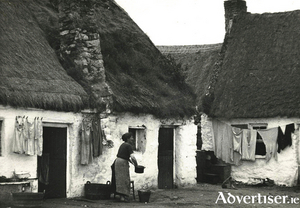
“With its old houses — straw for their roofs and rock and mortar for their walls, and every little end of a wall whitewashed a hundred times in blue or white or thin pink — the Claddagh was lovely, and from a distance it did the eye good. It was quaint, of course, but also a home-like little village; it had sand for its walks and a turfy marlish stuff for its floors, and always curls of smoke from its square low chimneys.
Public lecture on the life and ideas of Eoin MacNeill
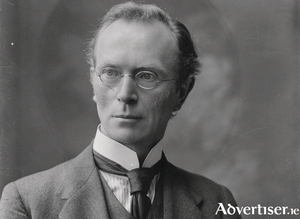
Eoin MacNeill is best known as the man who countermanded the order for the 1916 Rising to begin, and for representing the Government at the boundary commission which left the country still partitioned.
West Board Junior Champions 1989
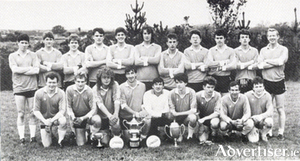
Barna had a hurling team in 1964 and handball was very popular in the area, but anyone wanting to play football would have togged out for An Spidéal. Local games were played in Sean Lydon’s field along the shorefront, halfway between the church and Barna school. Kevin Curran and Nicholas O’Fegan were the founders of Barna GAA Club in 1965 and they managed to field minor and junior teams that year. Their junior team had the honour of playing the club’s first competitive match on May 30 1965 against a Bohermore selection known as John F Kennedy’s. Kennedy’s won by a point.
Public lecture on the influential monks of Connacht
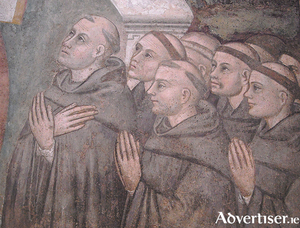
Franciscan, Dominican, Carmelite, and Augustinian monks played a central role in the history of medieval Connacht, and that history will be discussed at a public lecture next week.

